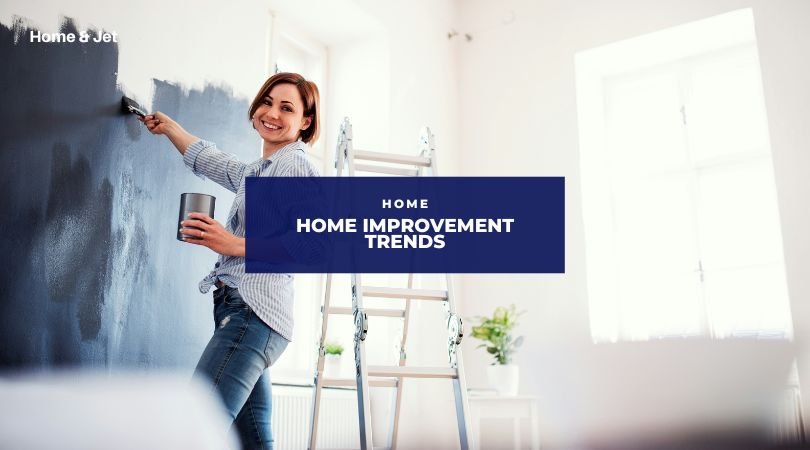15 Exciting Garden Design Trends for 2023
With the COVID-19 pandemic, more people might work from home and spend more time in their outdoor spaces. In turn, this might have led to a rising interest in gardening. A beautiful garden allows you to enjoy the fresh air and natural light and lets you get close to nature and the local wildlife. Cultivating your own food with edible plants is another major benefit of working in your garden.
As Organic Way editor Kim Stoddart says:
“More people than ever are getting into gardening and discovering the joy of seeing garden birds, and that connection with nature will only strengthen in 2023.”
So if you’re looking to do more gardening and update your yard, what are the top design trends of 2023 that could inspire you? Explore these 15 ideas to help get you started.
1. Tropical plants
If you’re in a suitable climate, consider adding tropical plants to your garden. With their striking foliage and spectacular blooms, it’s not surprising varieties like Toucan Dark Orange Canna Lily, and Canna Generalis are popular selections for 2023. Others include Caladiums (elephant’s ear), Rose of Sharon, and Rose mallows. These tropical varieties feature blooms ranging from gentle pastels to bright oranges and pinks.
2. Mediterranean themes
Adding Mediterranean elements and species to your garden creates a vibrant, novel aesthetic while ensuring your garden is more drought resistant in a changing climate. To bring a touch of the Mediterranean to your yard, incorporate:
Mediterranean shrubs, succulents, grasses, and perennials
Terracotta pots and planters
Gravel or tiles in light, natural shades
Specific species include:
Citrus
Olive
Agave
Agapanthus
Lavender
Rosemary
3. Merge the outdoors and indoors
One major trend is to bring more of nature to your indoor and outdoor living spaces. You don’t have to go outside to get close to the greenery and your garden. Ideas for doing this include:
Place a row of potted herbs along your kitchen window
Set up a wall of hanging planters along your corridor, hallway, or anywhere with some natural light
Set a trellis next to a window and plant a climbing species
Create a garden room in your outdoor living area and plant some white roses, marigolds, and begonias.
4. Multifunctional spaces
Establish multifunctional areas in your garden to get more enjoyment and utility from every bit of outdoor space you have. For example, you can create a functional outdoor space great for relaxing on a hammock, dining outside during the warmer months, or just dozing or reading among the greenery.
Since the advent of artificial turf, it has become a popular choice for homeowners looking to achieve a pristine lawn without maintenance and upkeep. Some have even incorporated artificial turf front gardens into their design, creating areas of artificial grass among natural flora.
In short, artificial turf can be an easy solution for those with busy lifestyles or in arid climates. Say goodbye to mowing the lawn for good. Plus, your garden and yard will always look pristine.
Concerns about its environmental impact are also present. The production process often involves petroleum-based materials and chemicals, and it does not contribute to the surrounding ecosystem in the same way that real plants and grass do.
Ultimately, artificial turf may have its place in certain situations, but incorporating it into your overall garden design should be carefully considered. When possible, using natural options is always the healthier choice for both people and the planet.
5. Sustainability
Sustainability continues to be a major long-term trend, and for 2023, it’s no different. Design and other trends within the sustainability movement include:
Organic gardening
Phasing out unsustainable materials like peat
Reducing waste
Minimizing plastics
Ethically source materials
Drought-friendly species
No-dig methods
Wildflower meadows
Polyculture or free planting using no pesticides or netting
6. High-tech gardening
Using time-saving gadgets can make your garden easier to manage. It can also add a touch of the high-tech look to your backyard. Use growing kits, self-watering pots, and battery-powered pruners. You can add a solar-powered automatic water system or even a digital water management system to your garden bed for the ultimate convenience and sustainability.
7. Dark foliage
A big garden design trend for 2023 is using dark foliage. For best results, contrast with bright colors from other plants or accessories like pots. Consider adding the following species featuring dark foliage to your garden this year:
Crape myrtle
Ninebark
Smoke bush
Sweet potato vine
Heuchera
8. Garden zones
Create garden zones to change the traditional “open-plan” approach to gardening. Ideas include:
Create garden rooms, add pergolas, use outdoor bar stools and introduce canopies and garden lighting to break up a large expanse of open space in your garden
Use different color schemes to set one zone off the other
Plant shrubs of different heights to differentiate your zones
9. Small gardens
Small space gardening is a big trend of the moment, with containers and balconies coming into focus for innovative ideas. These smaller gardens can be used to grow food and decorative plants. They’re also great for entertaining, cooking, eating outdoors, or relaxing.
You can create a small garden within your big garden by using planters, setting up a vertical garden, or even growing plants on your green roof if these spaces are available. You’ll create an interesting space and make more efficient use of your available garden space.
10. Grow your own food
A lot of home gardens already feature vegetable plots. With the pandemic seeing more people work from home, you might have extra time saved from having to commute to spend cultivating food. Higher food prices worldwide could also mean home gardens of any size could be incorporating edible plants in different ways in 2023.
As Libby Russell MSGD of Mazzullo + Russell says:
Productive gardens are still very much on-trend
These appealing designs make your home and outdoor spaces look more interesting while saving you on your food bill:
Potted herbs along windows and on balconies
Compact editable garden built into your outdoor dining deck area
Space-efficient greenhouses for suburban gardens
Vertical edible garden walls or vertical pocket gardens (also known as pocket forest gardening)
11. Geometric forms
Geometric forms are increasingly used in outdoor furniture, paving, and layouts. From topiary shapes to grass gardens around tiled paved stones, the possibilities for incorporating geometric shapes into your garden are endless.
In addition, draw inspiration from Parterre gardens. These feature plants planted and designed into geometric layouts, echoing topiary and shrubbery shapes in your choice of furniture, planters, and other accessories.
12. Restorative spaces
In the aftermath of the pandemic, the emphasis is on therapeutic spaces and calming sanctuaries that support mental and emotional health. To create a sheltered, cocooned atmosphere, these spaces tend to be surrounded by foliage rather than large, open spaces. Restful gardens could feature fragrant flowers and other species. Harmonious, calming colors and soft textures are also essential elements. The sound of flowing water from a water well or a pond waterfall is another idea to incorporate into your garden sanctuary.
As landscape designer Sheila Jack says:
‘Our outdoor living experience should truly engage all our senses. I’ll be looking to add elemental features that will stimulate all the senses – sound and reflective qualities of water; warmth, aroma, and flickering light of beautiful outdoor fireplace ideas; textural materials and aromatic planting.’
13. Wildlife-friendly gardens
According to landscape designer Charlotte Harris:
Selecting trees and plants that keep on giving, whether spring blossom, summer flowers, a crescendo of autumnal leaves and berries, or the beauty of the frost on seed-heads, both improves our experience of our gardens but also helps wildlife, often providing important food and shelter sources when they need them most.
More gardens are placing wildlife at the top of mind regarding the design. Home gardeners may be more eager to do what they can to alleviate the climate crisis and challenges like the loss of biodiversity. Design ideas along these lines include:
Planting for the pollinators, including bees, birds, and species
Adding bird boxes, bird feeders, and water features to attract and support the local bird population
14. Natural materials
The focus on natural materials is aligned with the sustainability and eco-friendly trend. Instead of artificial materials like metal, plastic, or concrete, gardens are increasingly looking toward more natural textures like brick, natural stone, and timber. In addition, some of these gardens utilize the latest, innovative techniques in laying stone and brick to minimize the need for mortar. As well as these, there’s a trend towards more ceramics, colored glass, granite, and other earthier, artisanal-looking materials.
15. Gravel and wood chip pathways
Garden pathways are also on the movement towards more natural materials in 2023. Instead of solid pathways featuring concrete or tile, you can create an unpaved path by laying gravel, wood chip, or other natural materials over the landscaping. An additional benefit is that these porous pathways facilitate drainage much more effectively than paved pathways.
Final thoughts
When it comes down to it, the best thing you can do for your garden is what makes you happy. Regardless of what’s in vogue in the world of gardening, what you consider aesthetically and otherwise pleasing is what will work for you. However, discovering the trends out there can inspire you and help you work out what you like by giving you some new, fresh perspectives.
Other posts we think you might like…
























